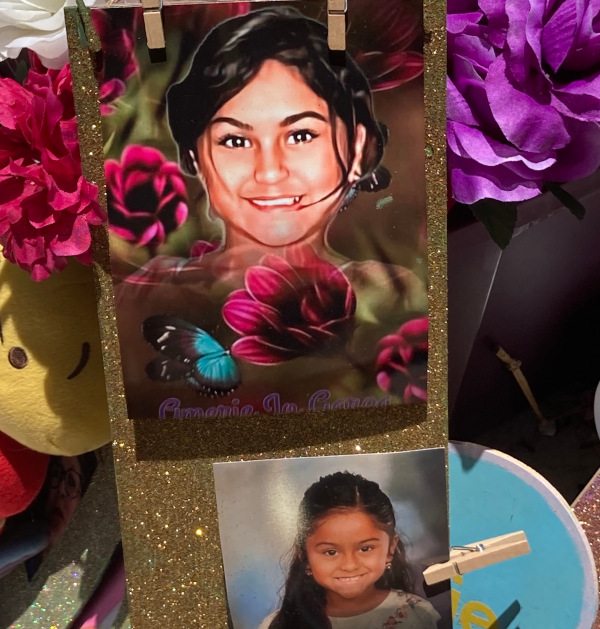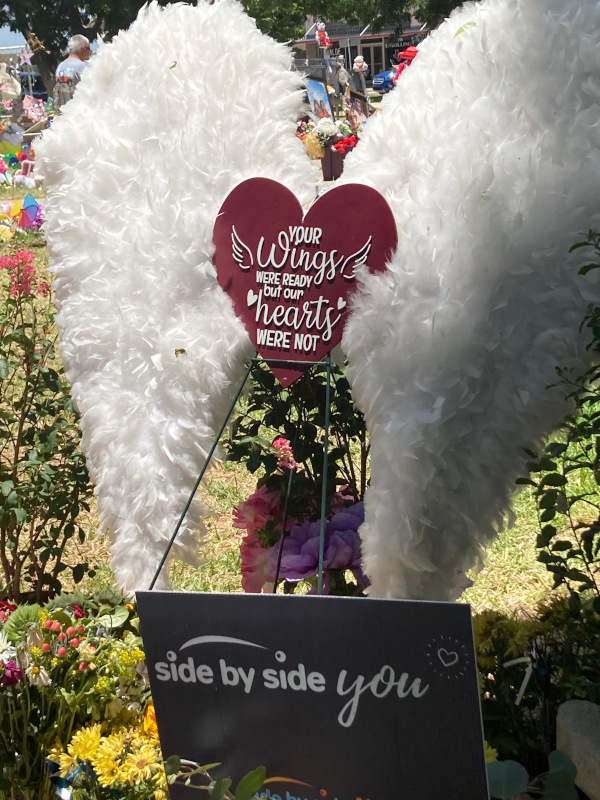
Over the last couple of years, Texas has made national news several times.
Once, during the height of the pandemic, an arial shot of a huge line for food in San Antonio made the New York Times clearly exposing hunger in this country.
Again, when a blizzard knocked out the power grid during the winter of 2021 leaving tens of thousands without electricity for days and shaming the state government for a woeful lack of preparedness for a changing climate.
Then Uvalde happened
But perhaps the saddest and worst news came on May 24 of this year when the pictures of nineteen primarily little brown children and two teachers pulled at the country’s heartstrings as they became the victims of yet another senseless mass shooting.
This time it was not at the hands of a white supremacist as with the mass shooting in El Paso in August 2019. Sadly, these killings were by one of their own: an 18-year-old Uvalde Mexican American youth, who entered the school with an AR style rifle and brutally and coldly shot 19 children and two of their teachers.
The news was so devastating that the husband of one of the slain teachers had a fatal heart attack two days later.
Before arriving at Robb Elementary, the young man had come from shooting his grandmother, who fortunately survived. News accounts report that he was troubled, possibly a victim of child abuse, a loner. In fact, students in his high school sadly had already labeled him a “school shooter.”
The Uvalde tragedy could perhaps be the saddest news out of Texas. But just a month later, on June 27, fifty-three migrants would be found dead in San Antonio, locked inside a tractor trailer with no air conditioning at a time when a blistering heat wave broke 100 degrees every single day.
The migrants died a painful death: asphyxiated and dehydrated. One emergency worker said they were too hot to even touch.
As the people of Uvalde buried their dead, families from Central America heard the news of their loved ones in Texas.
This has become a reality for South Texas.
What happened in Uvalde?
Many questions arose as a result of the dreadful school shooting. How is an 18-year-old able to easily buy such a weapon of mass destruction? What drives young men to carry out such heinous crimes? How did he get to the point of shooting not only innocent children, but his grandmother? How can this happen?
Where are the mental health services to help youth in crisis?
Why has there been no action in Washington to stop these shootings? The Uvalde shooting happened just 10 days after almost a dozen people had been shot and killed by a white supremacist who targeted specifically African Americans in Buffalo, NY.
The Gun Violence Archive has counted an astounding 356 mass shootings this year alone. The group recorded an overwhelming 692 mass shootings last year. (NY Times July 20, 2022)
After the Uvalde incident, when international press confronted Senator Ted Cruz (aka Cancun Cruz) and questioned him as to why these mass shootings occur only in the U.S., Cruz could not answer. Instead, he could only remain silent looking like a deer caught in the headlights. (Washington Post, May 26)
But perhaps the biggest question, and the question the people of Uvalde have raised again and again since the tragedy, is “how did Uvalde police allow this to happen.” How could the police do nothing after hearing the 911 calls from the children? The children were calling 911 repeatedly and the police bumbled the response!
At a time when people needed to grieve, instead they were faced with the knowledge that authorities did not handle the attack properly but also repeatedly changed their story on what happened before, during and after the tragedy.
For over 70 minutes, Uvalde police, border guards, and the Texas Rangers surrounded the school. About 400 (400!) law enforcement arrived almost immediately after the shooting started. Yet wounded children and teachers were not only left alone but allowed the shooter to continue shooting for all that time.
Scenes of law enforcement in video released since the shooting were shocking. Not only did they stand around useless, aimless, and ineffective, they handcuffed a mother who tried to run into the school to save her child! There was no leadership, no one in control. Had there been someone actually in charge lives could have been saved.
A community has awakened

Uvalde is a small town. The population is about 15,000 people, mainly Mexican American. It is located in what is called the Texas Hill Country. It is 80 miles west of San Antonio and 54 miles east of the Texas Mexico border.
It’s a quiet town. Many if not most people have guns, Mexican and white both. What is remarkable is how the community has rallied nonstop since the tragedy to demand justice. The people organized a march of 500, despite the heat, to ask why this was allowed to happen? Who was in charge and why are the police still at their jobs? Why was the head of security for the school district not reprimanded for inept work to defend the children? Why does the mayor say one thing and the chief of police another? Why did Governor Abbott quickly defend law enforcement only to denounce them days later when the video came out?
Gun safety is being demanded. It is important to point out that gun control is not being raised. Most people in Uvalde are not saying not to have guns. Given the gun culture in the region and the state that would not garner much support. But to ask the question and demand that 18-year-olds not be allowed to buy guns for war is a step forward.
The entire town is debating why and how can an 18-year-old be allowed to buy a weapon for war? Why are weapons for war even needed much less sold?
Activists and families of victims of other school shootings such as Parkland and Sandy Hook have reached out to the people of Uvalde. They have shared lessons and helped discuss strategy. People on social media point out that the weapons used in Uvalde were made by Daniel Defense manufacturing company. The group Everytown for Gun Safety claim that “Daniel Defense is violating the law by marketing assault weapons to the civilian market with violent and militaristic imagery and appealing particularly to the thrill-seeking and impulsive tendencies of susceptible teens and young men who are attracted to violence and military fantasies.” (everytownforgunsafety.org)
On Monday, August 1, the people of Uvalde counted another victory when community organizers traveled to a nearby town, Hondo, Texas, to demand that Hondo City Council rescind the right of the National Rifle Association to hold an event in their city. The people pushed the NRA back and won.
“It is a slap in the face to all of Uvalde. What’s an even harder slap in the face is the AR-15 you get if you donate $5,000 to the NRA,” Jazmin Cazares, whose sister died in the Uvalde massacre, told CNN. (Salon August 7)
The people of Uvalde and the entire region have been exposed to another important question: What use are the police anyway? Why were the Uvalde police so inept in saving lives that tragic day?
A few days after the incident in Uvalde, at a rally in San Antonio for AJ Hernandez, a 13-year-old shot to death by SA police, a speaker asked why are the police able to coldly shoot an unarmed 13-year-old in the street but are afraid to counter a mass shooter?
The question of the role of police in society is being questioned. Instead of arming teachers, people are asking isn’t it better to spend money on mental health services, on counseling and job training?
South Texas is heavily militarized. With Border Patrol, Texas Rangers, the U.S. Army, police and more, gun violence is a natural byproduct.
But history shows that police always defend the interests of the capitalist class. In an earlier day they were slave catchers for plantation owners. They busted unions and attacked civil right demonstrations. To this day, they kill innocent black and brown youth with little or no impunity.
It took the horrific killing of George Floyd caught on video to activate millions to demand “no more police violence” and win justice here and there.
Yet an 18-year-old messed-up youth was able to buy a weapon for mass destruction, kill 19 innocent beautiful brown children and two amazing Mexican American teachers while the police for almost two hours paced around looking like buffoons.
The people of Uvalde and the entire region are asking: why do so many of us die while the government looks on? Why are the policies of Washington and the capitol of Texas, Austin causing so much pain?
It is important to connect the violence people witnessed in Uvalde to the struggle to demand that “Black Lives still Matter,” that “No human being is illegal,” and that “climate change is real” and means more forced migration to the US.
The news out of Texas is bleak. But if the people of Uvalde can rise up and question social norms despite their pain and loss, there is hope for a brighter tomorrow. Si se puede.
